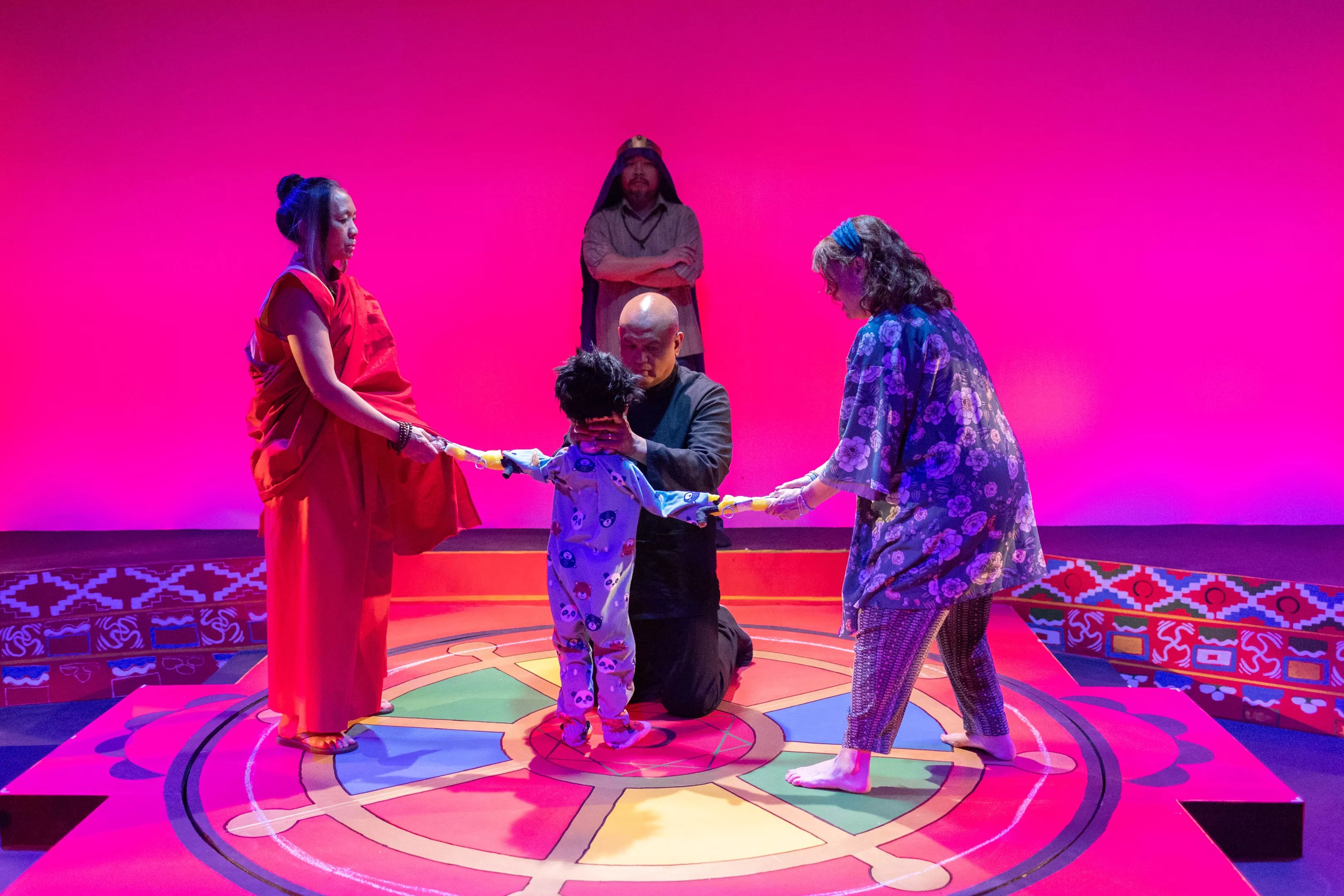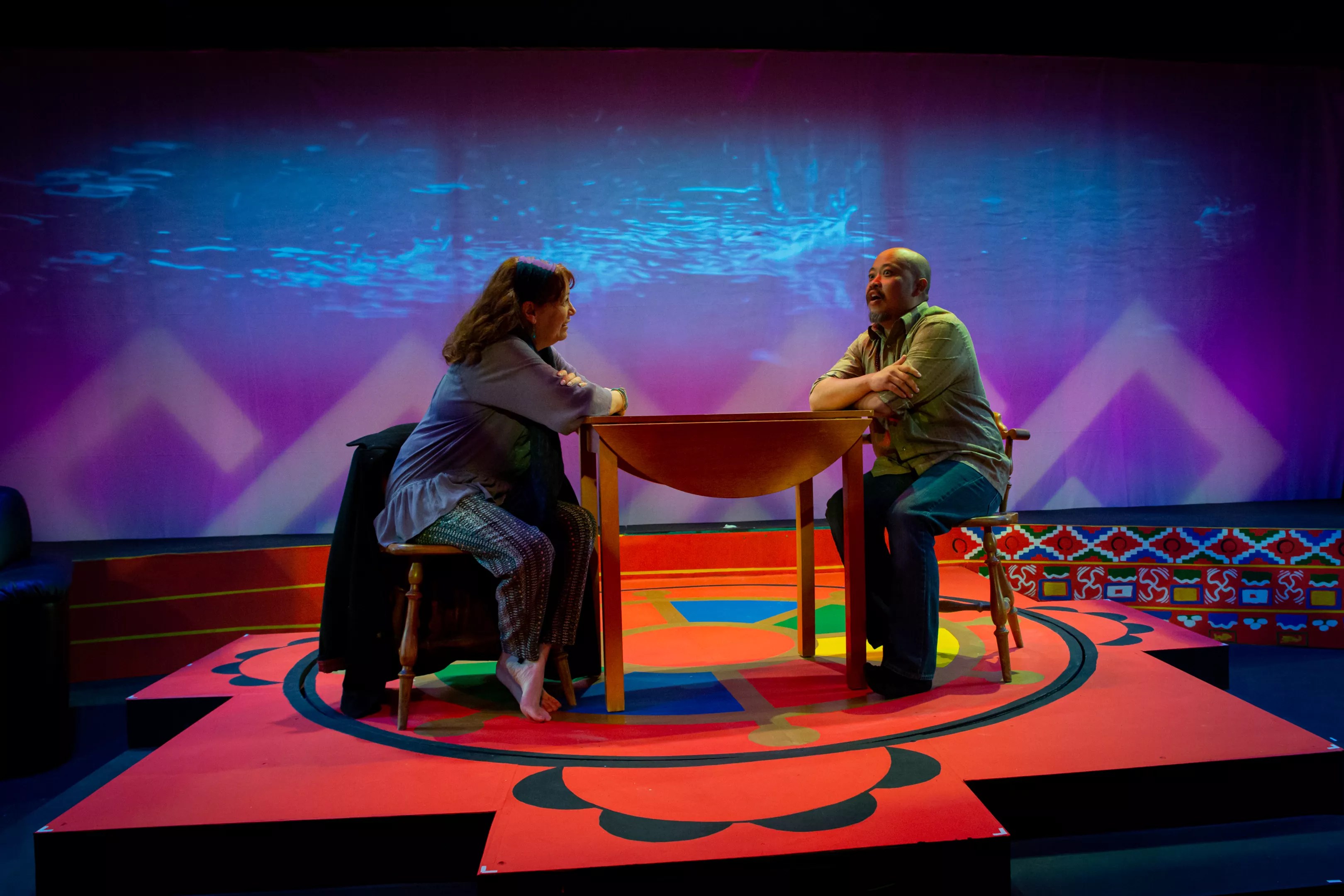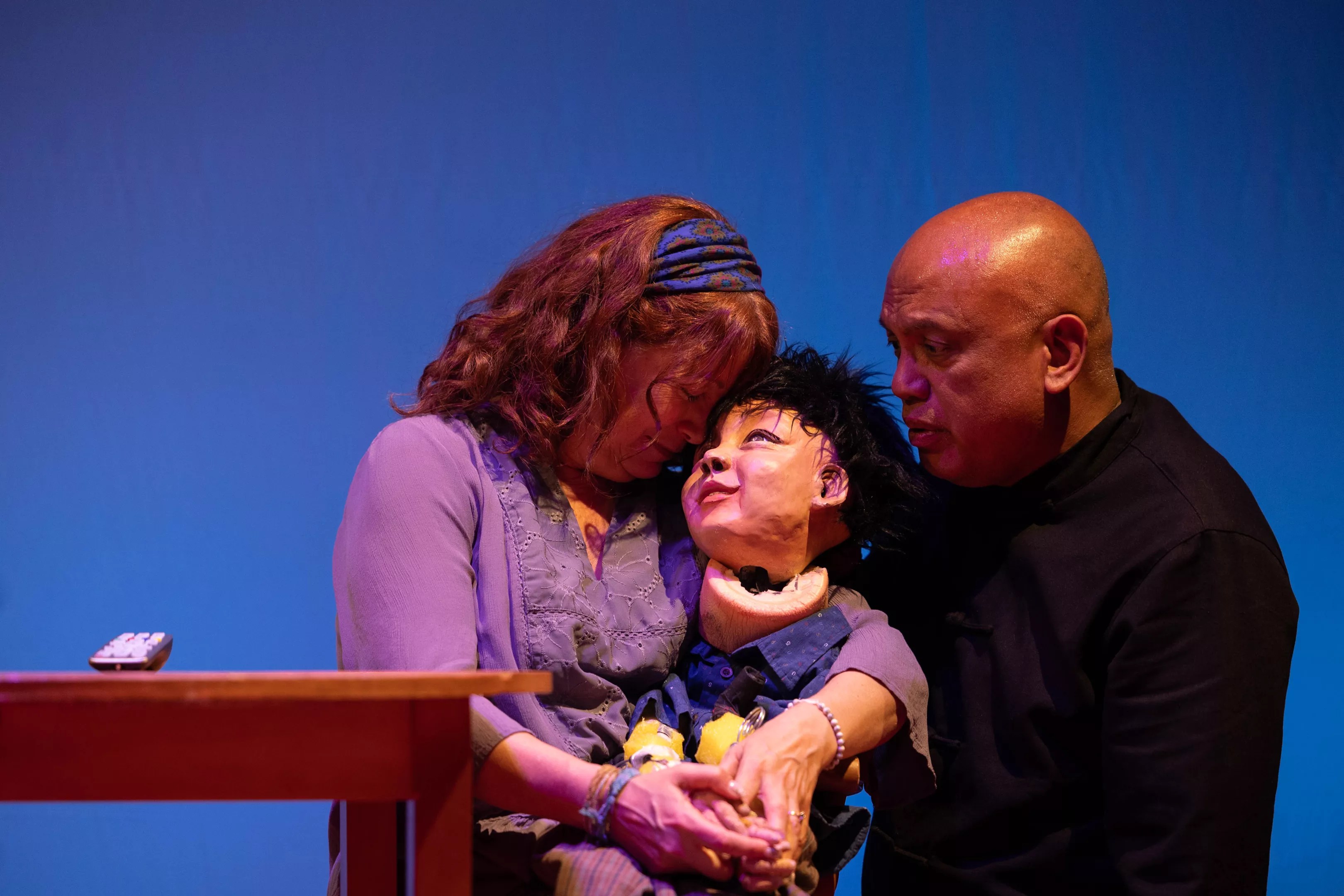
Courtesy of Sarah Roshan

Audio By Carbonatix
As Miners Alley Playhouse artistic director Len Matheo reflects on the theater’s upcoming production of The Oldest Boy: A Play in Three Ceremonies, he recalls an email exchange he had with the dramaturg who worked on the play’s world premiere at Lincoln Center in 2014.
“I was reaching out with a technical question about how they did this haircut live on stage in the Lincoln Center production, and she told me what they did, but what really stuck with me was what she said next,” Matheo recalls. “She said, ‘You can focus on the beautiful colors, sites, sounds and other cultural things of Tibet, but at its core, it’s a show about a mother’s journey through the loss and separation from her child.’ And I really took that to heart.”
The Oldest Boy, which opens on Friday, May 19, follows an American mother and Tibetan father whose three-year-old son is rumored to be the reincarnation of a Buddhist lama. Their relationship is tested when a Tibetan lama and monk ask the parents if they can take their child to India for spiritual training.

Lisa DeCaro, Tessa Fugua and Tim Inthavong in The Oldest Boy.
Courtesy of Jenna Moll Reyes/Boon Eye Photo
“The mother is trying to do what’s best for her child but has to learn to let go,” Matheo says. “While she doesn’t want to let go of her child, the father is guided by his Buddhist beliefs and tells her, ‘This is one of many separations that our child will go through.’ There are so many things that cause parents to be separated from their children, and it’s hard whenever it happens, but it must be especially difficult for these characters, because the stakes are so high and the child is so young.”
Matheo first read about the play in the New York Times back in 2014, but it wasn’t until he recently did a close reading of the script that he was convinced Miners Alley needed to produce it. “I chose The Oldest Boy because of its message and ability to create community,” he says. After deciding on the show, one of the first things Matheo did was call Peter Trinh to set up a meeting.
“Peter was one of the first people I spoke to after we decided to do the show, because I consider him one of the best Asian actors in town,” Matheo says. “I kind of thought, ‘If I don’t get Peter lined up, I don’t know if I’ll be able to cast [the father],’ so I’m grateful that Peter agreed to meet with me to discuss the show.”
When Trinh received the call from Matheo, he was already familiar with the play, as he had appeared in the regional premiere of The Oldest Boy at Vintage Theatre in 2016 as the Monk.
“Anytime you put up a cultural-specific show like this in Denver or anywhere, you are going to have casting problems, and you need to be proactive,” Trinh says. “I commend Len for having the wherewithal to start casting conversations early. The chance to approach the play again in a different role really piqued my interest. I identify with the father as a lifelong Buddhist myself. I also relate to the experience of being married to a Caucasian woman and the dynamic that lends itself to it.
“There is something so beautiful about two cultures coming together and realizing the humanity that underlies both of them,” he continues. “You ask anybody what’s wrong with the world, and they’ll likely tell you that we draw too many lines in the sand on so many different topics. We’re constantly looking for new ways to alienate each other from ourselves, and this play is all about coming together for the good of an innocent little boy.”

Lisa DeCaro and Peter Trinh rehearse for The Oldest Boy.
Courtesy of Jenna Moll Reyes/Boon Eye Photo
In addition to the show’s powerful message, another element that attracted Matheo to the project was the puppetry. The script begins with a note describing how the boy was originally portrayed by a traditional Japanese bunraku puppet in order to “maximize the child’s expressiveness.”
“Before Len programmed the show, I knew a little about it, but I had no idea how the puppet would be a real character,” says Lisa DeCaro, who plays the mother. “I have fallen in love with the puppet and become really possessive of it. The way Rob [Payo, who plays the boy] tips the puppet’s head in this nuanced, subtle way, and then his voice comes out, you believe that it is a living, breathing child.”
To build the puppet for the Miners Alley production of The Oldest Boy, Matheo commissioned Cory Gilstrap and Kamla Presswala of Imagined Creations.
“When I read the script, I knew it was going to be beautiful,” Gilstrap says. “The pace lends itself so beautifully to the type of puppets we are using. Bunraku is an ancient puppetry form; they’re about a third the size of a human being, and it takes multiple people to operate the puppets. I never want to say we can duplicate it, because it takes 24 years to be a master puppeteer in that puppet form, but we did our best to create a puppet that could be animated by anyone who picked it up.

Lisa DeCaro and Rob Payo in The Oldest Boy.
Courtesy of Sarah Roshan
“The cool thing about the puppet is that it represents the boy as well as the enlightened one within the child,” he continues. “I just wanted to add that because Rob is vacillating between those two characters at all times; he’s one or the other at any given moment.”
“And sometimes he’s both,” Trinh says.
“Great point,” Matheo adds. “It’s true theater magic.”
Along with bringing Gilstrap into the rehearsal room to teach the actors how to use the puppets, Miners Alley also worked with Tracy Joosten, a Tibetan Buddhist and the show’s cultural consultant, and the Sherpa House in Golden to help the company accurately represent Tibetan culture.
“We really delved into the history,” Trinh says. “As the play’s full title says, it’s a play in three ceremonies: the marriage, the daily bowl rituals and the enthronement. The whole production team has been so helpful in making sure we accurately represent the costumes, language and movements. None of the Asian actors are Tibetan; we are Vietnamese, Filipino, Laotian and Hmong. We’re actors, and we handle our ignorance by filling it in with education and knowledge. Len has been great with providing us with those resources.”
Trinh notes that while he’s been working in the industry for over twenty years, it’s rare he gets to tell Asian stories. And the few times he has had the chance to perform Asian shows, they have been for largely white audiences.

Tim Inthavong and Rob Payo in The Oldest Boy.
Courtesy of Sarah Roshan
“A big challenge is figuring out how to get the Asian community to come out to support shows,” Trinh says. “It’s one thing to produce Asian stories, but getting audiences to come out is another. I have been heartened by the push that Miners Alley is doing for the show, and I hope that the Asian-American community comes out to support this show, because it is a story uniquely positioned to speak to them.”
Matheo is eager for the community to see the play, as he says it embodies everything he loves most about theater.
“My favorite plays and movies take me to an unknown place or world that I have never been to,” Matheo says. “And this is one of those plays where you are suddenly in India or in a room with monks and lamas teaching you; it really just shows what theater can do to bring people together through storytelling.”
The Oldest Boy, Friday, May 19, through June 11, Miners Alley Playhouse, 1224 Washington Avenue, Golden. Find tickets, times and more information at minersalley.com.